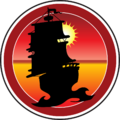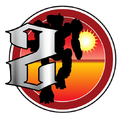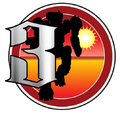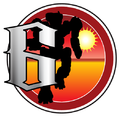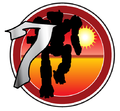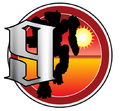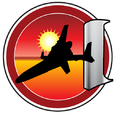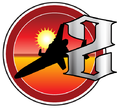Hanseatic Defense Force
This article needs to be updated with material from Operational Turning Points: Hanseatic Crusade, Spotlight On: Hellion Keshik, Spotlight On: Schmidt's Petraries. Once these titles clear the Moratorium period, or if they already have, please consider revisiting this article and updating it with the new material. |
The Hanseatic Security Force (renamed the Hanseatic Defense Force in the 3110s) was the armed forces of the Deep Periphery state known as the Hanseatic League.
Contents
History[edit]
Founding and Early History[edit]
The Hanseatic Security Force was born in the mid-thirtieth century as a result of the desire of the Council of Merchants to continue expanding their sphere of influence and dictating policy to the various "independent" colony worlds within the Hansa sphere of influence. The Council laid the foundations of the HSF in 2920 with the decision to recruit mercenary forces to act as a security force, tasked with maintaining order and protecting Hanseatic interests; by the mid-thirtieth century the League had obtained enough equipment from sources in the Inner Sphere to form its own army, the Hanseatic Security Force (HSF). In addition to possessing aerospace fighter and conventional vehicle production facilities of a comparable level to those of the Inner Sphere at the time, the Hansa also obtained the design schematics to allow them to produce BattleMechs; while production within the League was never particularly high, these 'Mech assets were supported by a substantial conventional force.[1]
Initially, elements of the Hansa attempted to drive off interlopers and intruders—including adventurous merchants from the Periphery and Inner Sphere who might threaten the Hansa monopolies on trade and communications within the Hansa sphere of influence. When that proved unworkable in the longer term the Council of Merchants decided in 3011 to open up three worlds to outside trade,[1] guarded by one of the Regional Defense Forces.[2]
The Clan Invasion and Jihad years[edit]
Attempts to drive off Clan merchants who began appearing openly in the 3050s were largely unsuccessful, with the Clan response being typically bellicose; this was highlighted in 3055 when a Hansa Captain-General drove off a Clan Diamond Shark JumpShip near the Chainelane Isles only to have his JumpShip and a second JumpShip destroyed along with their attendant DropShips by the Diamond Shark WarShip that appeared in-system shortly after. As a result, Hansa efforts at expansion were directed away from the Clan Homeworlds afterwards.[1]
Between 3064 and 3067, the Council of Merchants appointed Captain-General Albert Snow—cousin of the head of the Council of Merchants, Liam Snow—to the position of head of the HSF. Promoted out of Regional Defense Force 1, Albert began the process of transforming the HSF from a simple convoy protection force into a relatively well-trained military command,[3] a process that involved replacing Captain-General Jonas Were of Regional Defense Force 5—an individual suspected of lining his own pockets rather than supporting his troops[4]—an early sign that Albert Snow would brook no dissent against his command. Snow also went against the wishes of a number of members of the Council of Merchants by choosing Captain-General Cynthia Hickock of Regional Defense Force 3 as his deputy; Hickock's military skills were well-documented, but Hickock's experience had been gained as the result of a mercenary career, a career that also funded her rise through the ranks of the HSF, a stark contrast to those who funded their career through mercantile skills.[5]
During the Jihad the HSF faced a number of challenges, including a raid on Antwerp by forces from Clan Ice Hellion, while an attempt by two RDFs to displace Clan Diamond Shark from the Chainelane Isles resulted in heavy losses for no gain. The discovery by the Umayyad Caliphate and the Castilian Principalities that the Hansa were manipulating events to keep the two nations locked in an extended war for control of Nueva Castile led to constant raids by Umayyad forces in the same era, keeping the other RDF units busy; meanwhile, the Convoy Protection Force found itself tangling increasingly frequently with Clan Diamond Shark forces and taking significant casualties as a result.[6]
The successful defense of Antwerp by Regional Defense Force 2 in 3073 was a testament to the leadership abilities of Albert Snow, although Snow controversially pushed for the Hanseatic League to withdraw from its involvement in Nueva Castile because of the drain on the HSF imposed by having to constantly fend off punitive raids conducted by the Umayyad Caliphate, which was retaliating for the Hansa involvement in the ongoing conflict between the Caliphate and the Castilian Principality. Snow was confident of the HSF's ability to deal with the Caliphate's raids, but believed that the Clans represented the greater—and increasing—threat. By 3076, Snow was also causing controversy through his romantic relationship with Jessika Crossland, the Word of Blake Precentor stationed on Bremen; despite both the diminished Blakist activity within the League and Crossland's membership in the Expatriates, one of the less extreme Blakist sects, Snow's involvement with Crossland was the subject of some concern for members of the Council of Merchants. Snow's response to these concerns was characteristically blunt, and served to further endear him to his troops within the HSF.[3]
Reforms and the Hanseatic Crusade[edit]
From the 3080s until 3140, The Hanseatic Security Force worked upon eradicating the flaws in their military by hiring experienced personnel and improving the forces they had. Following an attack upon the Escorpión Imperio colony of Holdout in 3112 which ended in the rout of RDF 2 by Clan Goliath Scorpion, the Hanseatic military underwent a period of far-reaching reforms. Under the newly appointed Captain-Marshal Helga Bauer, the HSF was renamed the Hanseatic Defense Force and Convoy Protection Forces redesignated as Convoy Defense Forces, and the Lübeck Military Academy founded to improve the officer corps. The Defense Force was expanded to nine Regional Defense Forces and three CDFs, with much-improved training and equipment compared to their predecessors. Bauer's successor Rudolf Schmidt continued maintaining the HDF's high readiness upon his appointment in 3135, ensuring that the Hanseatic League had a military fully prepared to defend the nation.[7]
Unfortunately all of these preparations ultimately proved insufficient to stave off total conquest when war did break out with the Imperio in 3140. While the HDF fought hard during the Hanseatic Crusade and dealt some defeats alongside mutually heavy losses to the Scorpion warriors, in the end the Imperio conquered the League and formed the Scorpion Empire from a merger of the two states. Once the Council of Merchants committed mass suicide by detonating explosives in the capital, the Hanseatic Defense Force itself effectively ceased to exist with Schmidt's final surrender on Bremen. Any survivors were taken prisoner as bondsmen for incorporation into the Clan, slain if they resisted to the end, or resorted to turning to piracy.[8][9]
Structure of the HSF[edit]
The official structure of the HSF consists of seven units, six of which are Regional Defense Forces (RDFs); the seventh is the Convoy Protection Force (CPF). The bulk of the Hanseatic League's 'Mechs and conventional armor serves within the various RDFs, while the CPF is comprised of aerospace fighters, marines, and the small quantity of Assault DropShips owned by the Hansa.[10]
The Council of Merchants exercises control over the HSF, with each RDF answering directly to the Council. Each RDF is commanded by the Captain-General of the BattleMech forces within that RDF; in addition to having almost total control over the forces within their charge, each Captain-General is responsible for keeping those forces fed and equipped. In exchange for this responsibility, each Captain-General receives a "tithe", drawn in proportion to the trade revenue for the area for which the Captain-General is responsible. This allows Captain-Generals to potentially turn a substantial profit, but as each Captain-General is responsible for making up any shortfalls, politics within the League has resulted in an individual RDF being deliberately starved of cash as a means of discrediting the Captain-General in charge - or reducing that Captain-General to penury. This political tactic represents an act of brinkmanship for those involved, as starving an RDF of funds runs the risk of weakening the League's defenses and their profitability as a consequence.[10]
In the early thirty-second century, the HSF pushed the Council of Merchants to provide them with more authority over their military deployments and expanded power. The Council agreed, allowing the HSF to expand the size of each RDF deployment. RDF 2 tested the new deployment model by attacking several Scorpion Empire colony worlds. The success of these attacks allowed the Captains-General to ask for more reforms. To oversee these changes they created the position of Captain-Marshal. The Captain-Marshal had command of all Regional Defense Forces and Convoy Protection Force.[11]
Composition of HSF Units[edit]
CPF deployments are handled on a case-by-case basis, which means that the structure of each CPF detachment will be dependent upon the mission being performed. When several merchants travel together, the HSF will often assign a military JumpShip with attendant combat DropShips and fighters as a chaperone vessel; such a unit represents the main means for the League to project influence and are often used to cow potential buyers and sellers and to intimidate unaffiliated traders. On a smaller scale, a single merchant vessel traveling the Deep Periphery may be accompanied by an aerospace fighter squadron, or possibly a military DropShip; both the JumpShip and any DropShips will also have a marine contingent deployed aboard.[10]
RDF deployments at the subunit level typically consist of a 'Mech company backed up by one or two composite battalions of infantry and armor. Larger, harder-hitting units are assembled when needed, but prior to the mid thirty-first century no BattleMech deployment above battalion strength had ever been performed by the HSF.[10]
After the appointment of the Captain-Marshal, the Regional Defense Forces grew in size to include a regiment of 'Mechs, vehicles, and infantry.[12]
Technology of the HSF[edit]
HSF units are typically combined arms units equipped with designs equivalent to Inner Sphere equipment from the late Third Succession War, although in the latter half of the thirty-first century more modern equipment began appearing in service with the HSF as a result of increased trade within the Inner Sphere—and a desire on the part of various governments within the Inner Sphere to exploit the League.[13]
By the early thirty-second century, the Hansa had improved their industrial base to the point that they could produce Clan-invasion era equipment and weaponry.[14]
Uniforms[edit]
Field Uniforms[edit]
Enlisted soldiers and marines within the HSF have a uniform that consists of a functional gray jumpsuit, over which the body armor and/or equipment harnesses relevant to their tasks is worn. The helmets and flak vests used by infantry forces within the HSF are closely modeled on those used by the Lyrans, and from a distance appear indistinguishable from their Lyran counterparts.[15]
Dress Uniforms[edit]
Junior officers wear a red shirt and ash-gray trousers; worn over the shirt is an ash-gray woolen jacket marked with black epaulets and the rank insignia of the officer in question. Black boots and a simple black belt round out the uniform.[15]
As the senior officers within the HSF, Captain-Generals wear a uniform consisting of a red shirt worn under a white woolen jacket, white stirrup trousers and black boots. The jacket is decorated with gold epaulets and a red-banded golden sash; the bands on the sash denote the seniority of the officer in question.[15]
All members of the HSF wear the Hansa patch as insignia; the patch depicts an ancient sailing ship inset on a red disc, and each patch has a number on the sail depicted on the ship corresponding the RDF to which each person is assigned. The only exception is the Convoy Protection Force: Hansa patches worn by the CPF display a large letter "C" rather than a number to indicate their affiliation.[2]
Units of the HSF[edit]
- Regional Defense Force 1
- Regional Defense Force 2
- Regional Defense Force 3
- Regional Defense Force 4
- Regional Defense Force 5
- Regional Defense Force 6
- Regional Defense Force 7
- Regional Defense Force 8
- Regional Defense Force 9
- Convoy Defense Force
Awards and Decorations[edit]
This Section looks to be a Stub This section is a stub (i.e., in need of additional material). You can help us by expanding it. Please remove this tag when that effort is complete. |
Military Academies[edit]
The Lübeck Military Academy was established by the first Captain-Marshal, Helga Bauer. She staffed the academy with retired HDF and expatriate Inner Sphere officers. The first class of officers entered service in 3120.[11]
Ranks[edit]
There are relatively few ranks within the HSF, with noncommissioned personnel all universally classified as soldiers. The various ranks and responsibilities are:[15]
Captain-Marshal: This rank was created after 3112. Elected by the Captains-General, this officer was the supreme leader of the Hanseatic Defense Force. The Captain-Marshal also had a seat on the Council of Merchants.[11]
Captain-General: In many ways, Captain-Generals embody the overlap between the mercantile and the military within Hansa society. Captain-Generals are the most senior rank within the HSF and command both trading vessels and their attached military conditions; Captain-Generals are also merchants, responsible for the buying and selling of goods as well as command of any armed forces. While a fleet may contain several Captain-Generals a strict seniority system is in place to ensure that the chain of command remains coherent, and Captain-Generals also command each of the regiments within an RDF. The supreme commander of the RDF and governor of the worlds within a region is the commander of the BattleMech force. Captain-Generals are distinguished by their uniforms, with a system of broad red bands (designating 10 years' service) and narrow red bands (designating one year's service) marked on the golden sash of office determining the seniority of each Captain-General.[15]
Major: It is within the staff of the Major's grade that the most experienced tacticians within the HSF can usually be found. Designated by rank insignia depicting a fully shaded golden disc, Majors are the executive officers of battalions or vessels and are the lead officers charged with overseeing combat deployments.[15]
Commander: Broadly equivalent to an Inner Sphere Captain, Commanders are in charge of company-sized deployments and will usually oversee their commands on the battlefield. The rank insignia for a Commander is a half-shaded golden disc.[15]
Lieutenant: The most junior officer grade within the HSF and the starting rank for most new entrants from merchant families capable of sourcing the required payment for the RDF commander, Lieutenants command squads of troop. The vast majority of Hansa MechWarriors, aerospace pilots and tank commanders are Lieutenants; the rank insignia for all officers of this grade is a golden ring.[15]
Soldier: Generally serfs with few prospects for advancement or promotion, the bulk of the marines and infantry that comprise the majority of the personnel within the HSF are simply ranked as Soldiers.[15]
Gallery[edit]
References[edit]
- ↑ 1.0 1.1 1.2 Field Manual: Periphery, p. 135: "Hanseatic League"
- ↑ 2.0 2.1 Field Manual: Periphery, p. 137: "Regional Defense Force 1"
- ↑ 3.0 3.1 Masters and Minions: The StarCorps Dossiers, p. 231: "Albert Snow"
- ↑ Field Manual: Periphery, p. 138: "Regional Defense Force 5"
- ↑ Field Manual: Periphery, p. 137: "Regional Defense Force 3"
- ↑ Field Report: Periphery, p. 18: "Deep Periphery Forces"
- ↑ Operational Turning Points: Hanseatic Crusade, pp. 9–10
- ↑ Operational Turning Points: Hanseatic Crusade, p. 13: Mopping Up
- ↑ Operational Turning Points: Hanseatic Crusade, p. 34: "Touchpoint Bremen"
- ↑ 10.0 10.1 10.2 10.3 Field Manual: Periphery, pp. 135–136: "Structure"
- ↑ 11.0 11.1 11.2 Operational Turning Points: Hanseatic Crusade, p. 10
- ↑ Operational Turning Points: Hanseatic Crusade, p. 22
- ↑ Field Manual: Periphery, p. 135: "The Hanseatic Security Force"
- ↑ Operational Turning Points: Hanseatic Crusade, p. 9
- ↑ 15.0 15.1 15.2 15.3 15.4 15.5 15.6 15.7 15.8 Field Manual: Periphery, p. 136: "Ranks and Uniforms"



